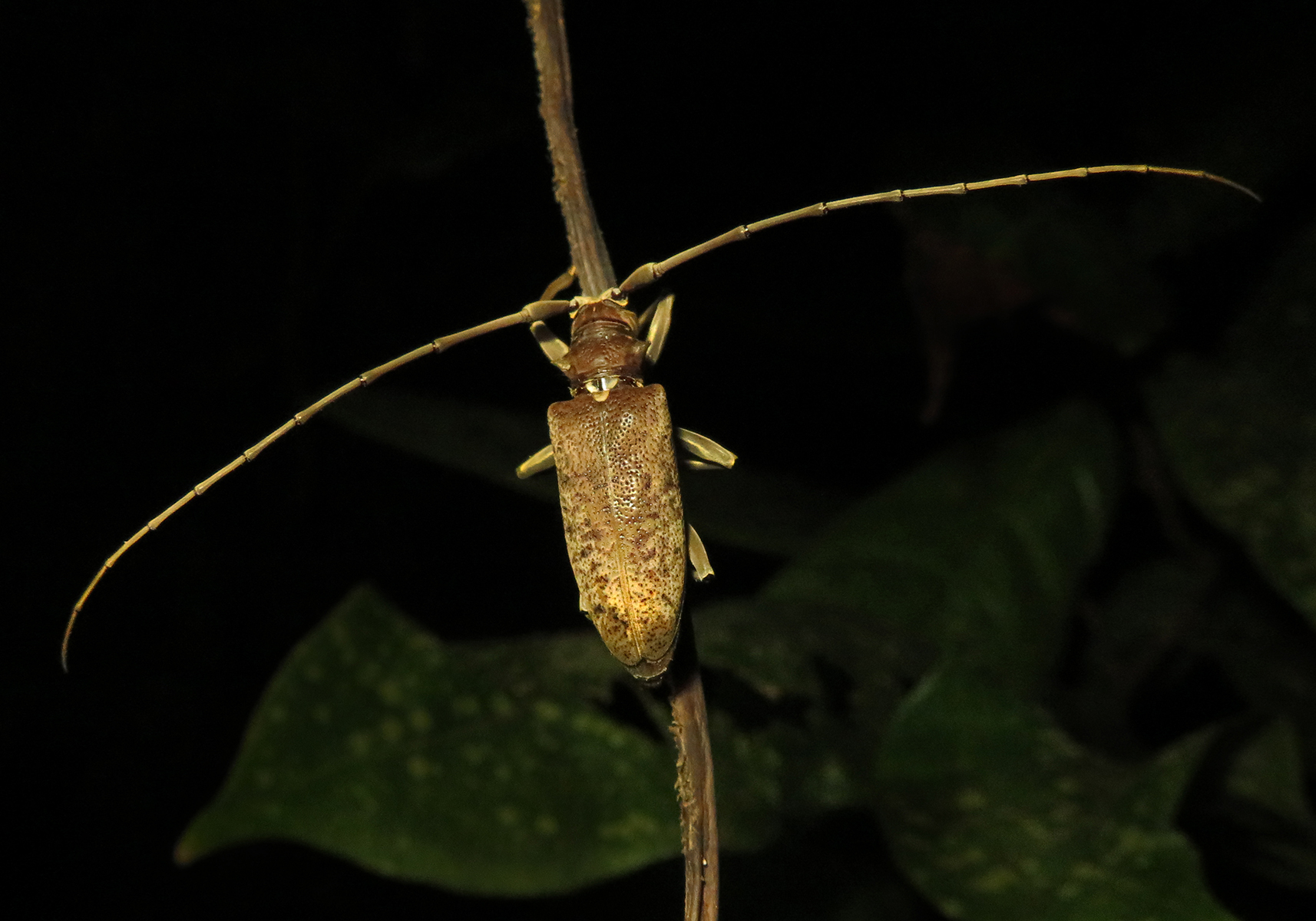Acalolepta rusticatrix, known as the Flat-faced Longhorn Beetle, is part of the Cerambycidae family. These beetles are characterized by their elongated bodies and distinctively long antennae, often as long as or longer than their bodies. Their “flat-faced” common name derives from their broad, flat heads.
Flat-faced Longhorn Beetles
Acalolepta rusticatrix
Home » Encyclopedia » Animals » Insects » Beetles » Flat-faced Longhorn Beetles
Classification
KINGDOM
:
Animalia
PHYLUM
:
Arthropoda
CLASS
:
Insecta
ORDER
:
Coleoptera
FAMILY
:
Cerambycidae
GENUS
:
Acalolepta
SPECIES
:
Acalolepta rusticatrix
Other Information
Venomous?
These beetles do not possess any poison and are not toxic to humans or other animals.
A Danger to Humans?
Flat-faced Longhorn Beetles pose no direct threat to humans. However, the larvae are wood-borers and can cause damage to trees, which might have economic implications in forestry and landscaping.
Population Status
Specific population sizes for Acalolepta rusticatrix are not well documented, but they are not considered endangered or threatened.

Flat-faced Longhorn Beetles (Acalolepta rusticatrix), photo by David Lowenthal
Life Span:
The life span of these beetles can vary, but they typically live for about 1 to 2 years from egg to adult, with most of their life spent in the larval stage.
Weight and Length:
As medium-sized beetles, they weigh just a few grams. Adults typically range from 20 to 40 mm in length, depending on environmental factors and nutrition during larval development.
Distribution:
Acalolepta rusticatrix is primarily found in East Asia, including Japan, Korea, and parts of China. They inhabit forests and wooded areas where suitable host trees are available.
Habits and Lifestyle:
These beetles are mostly active at night (nocturnal). The adults are often found on the trunks and branches of trees, while the larvae bore into wood, which can sometimes lead to them being considered pests.
Diet and Nutrition:
Larvae feed on the wood of various trees, digesting cellulose with the help of specialized gut bacteria. Adults may feed on plant matter such as leaves, sap, and sometimes fruit.
Mating Habits:
Mating occurs on or near host trees. Females lay eggs in crevices or under the bark of trees. The emerging larvae then burrow into the wood where they will live and feed until they mature into adults, emerging from the wood to repeat the cycle.
